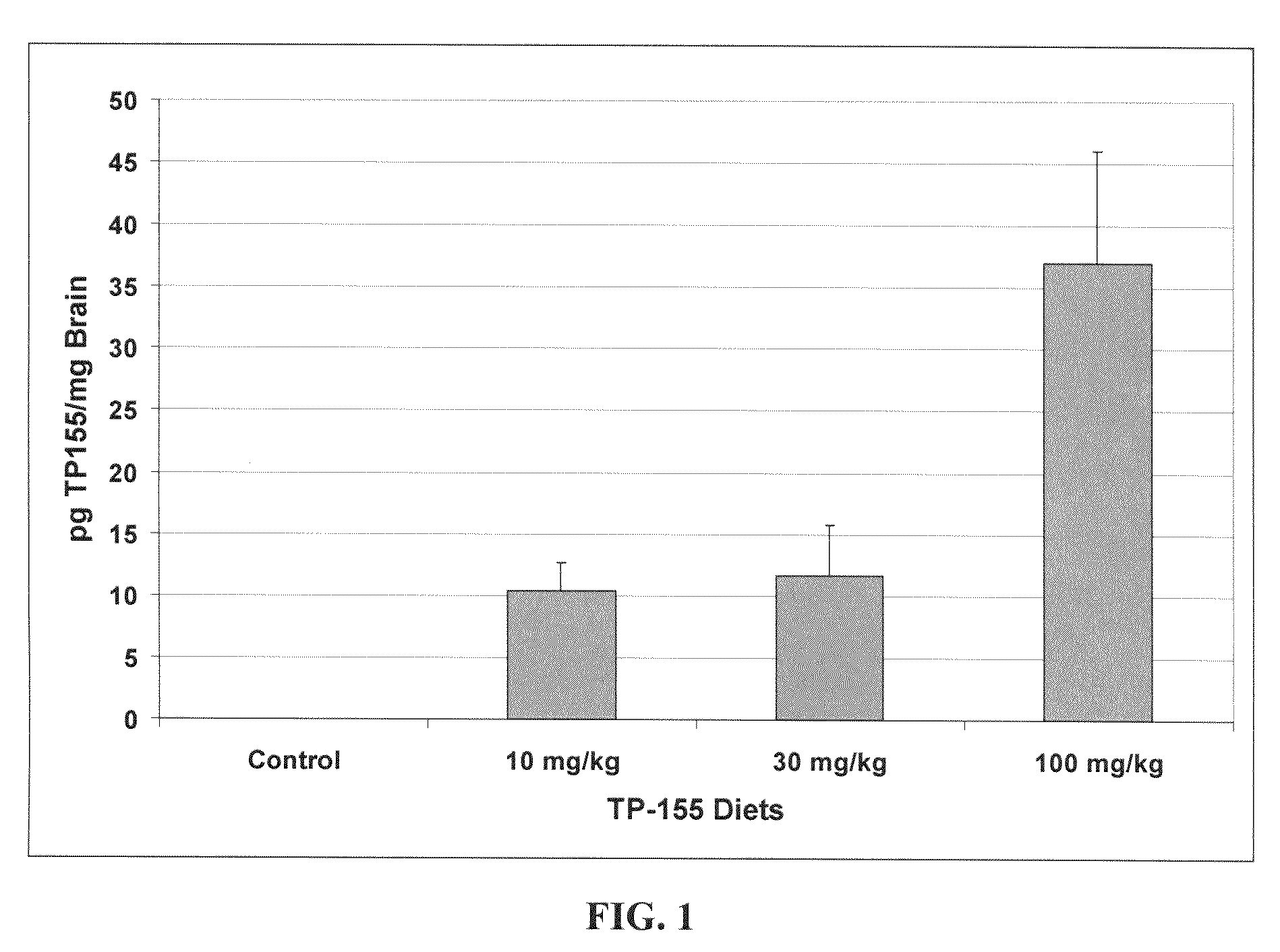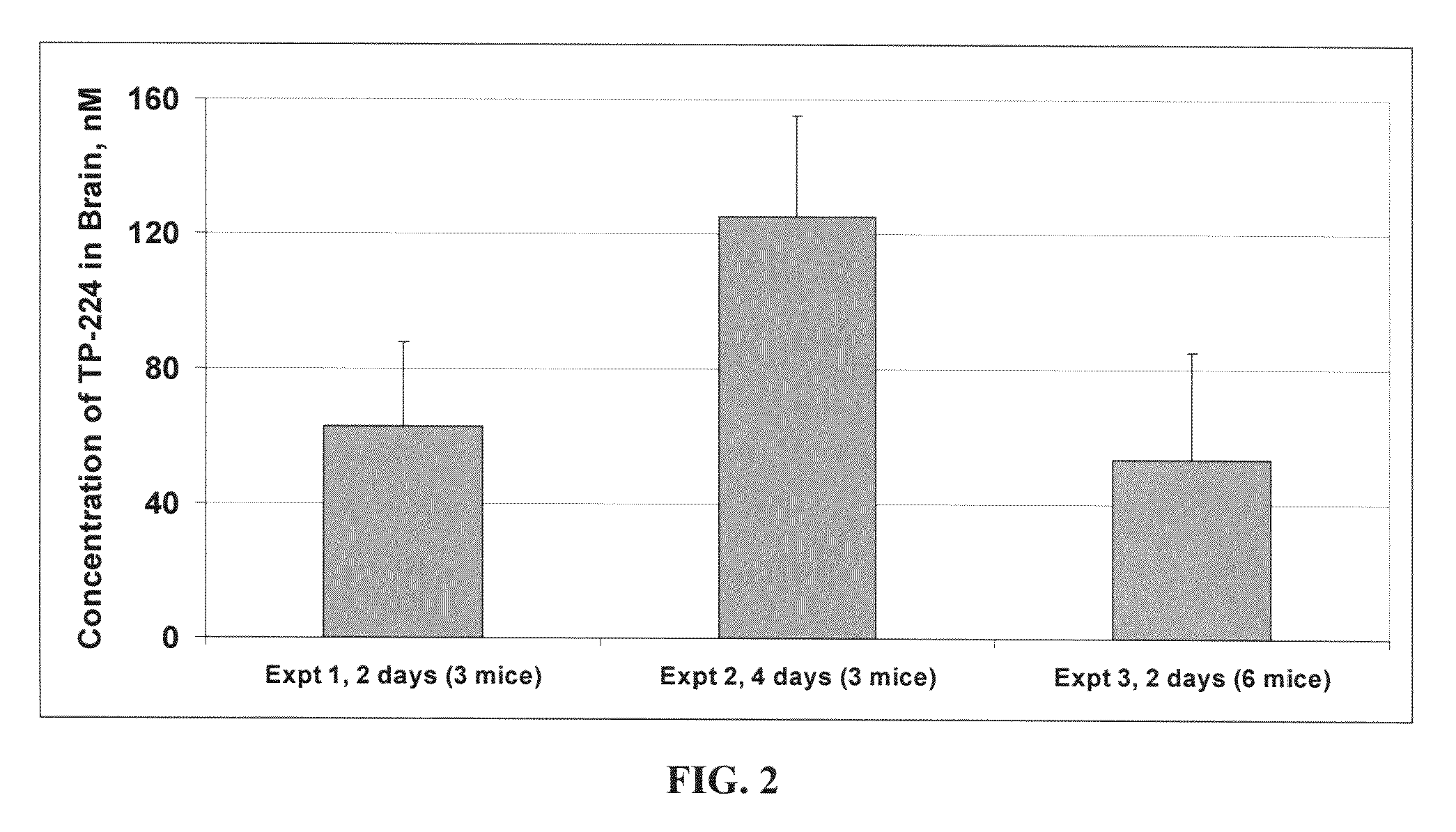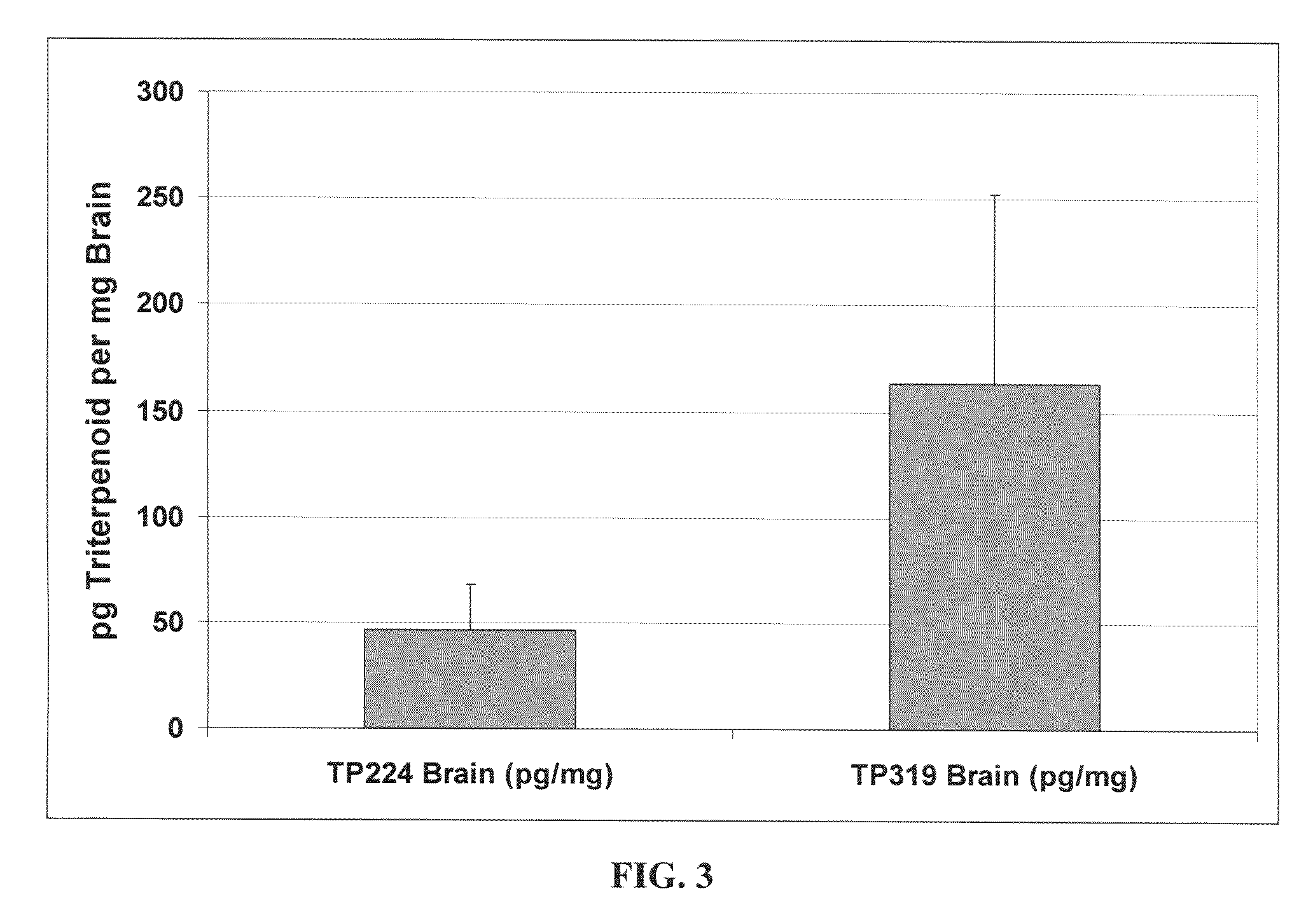Novel synthetic triterpenoids and methods of use in the treatment and prevention of multiple scleroris
a synthetic triterpenoids and multi-sclerosis technology, applied in the field of biology and medicine, can solve the problems of demyelination and subsequent neuronal failure, permanent neurologic problems persist, and the devastating neurological disease of multiple sclerosis (ms) continues to be fatal in many patients, and achieves the effect of improving the glomerular filtration rate or creatinine clearan
- Summary
- Abstract
- Description
- Claims
- Application Information
AI Technical Summary
Benefits of technology
Problems solved by technology
Method used
Image
Examples
example 1
Materials and Methods
[0316]Chemicals. Triterpenoids were synthesized as previously described in Honda et al. (2002), Honda et al. (1998), and Honda et al. (2000b). The various amide derivatives were synthesized by the condensation of CDDO acid chloride with the respective amine hydrochlorides (or free amines) using variations based of methods of Honda et al. (2002). The synthesis of CDDO-MA is discussed in Honda et al. (2002), which is incorporated herein by reference. The syntheses of CDDO-EA and CDDO-TFEA are presented in Yates et al. (2007), which is incorporated herein by reference, and shown in the Scheme 1 above.
example 2
Blood Brain Barrier Penetration Results
[0317]The ability of synthetic triterpenoids (TPs) to penetrate the brain of mammals varies according to their structure. As shown in FIG. 1, CDDO-Me (TP-155) is detectable, using MS analysis, in the brains of mice fed very low levels of the compound over a week.
[0318]FIG. 2 shows the results of three experiments directed toward the ability of CDDO Methyl Amide (TP-224) to penetrate into the brains of mice that received TP-224 orally. In experiment 1 (Expt 1) three mice were each fed an 800 mg / kg diet of CDDO Methyl Amide (TP-224) for two days. In experiment 2 (Expt 2) three mice were each fed an 800 mg / kg diet of CDDO Methyl Amide (TP-224) for four days. In experiment 3 (Expt 3) six mice were each fed an 800 mg / kg diet of CDDO Methyl Amide (TP-224) for two days.
[0319]As shown in FIG. 3, feeding CDDO-EA (TP-319) for two days results in higher brain levels than when the mice are fed CDDO-MA (TP-224). FIG. 5 shows that CDDO-TFEA (TP-500) is detec...
example 3
In Vivo Results from EAE Studies
[0325]The mice used for these studies were female and either wild type or heterozygotes for the Tgf-b1 gene. The latter have a more accelerated course of disease (yet are equally protected by triterpenoid treatment). The mouse strain used for these studies includes either a mixed SvEV 129×C56BL / 6 or a pure SvEV129 strain.
[0326]Slight variations in protocol were used across all studies to evaluate and optimize the activity. For the studies correlating with FIGS. 10-22, animals were injected with the following:
[0327]CFA: 100 microliter incomplete Freund's Adjuvant+8 mg / ml mycobacterium Tuberculosis+100 microliter PBS
[0328]PTX: Pertussis Toxin 200 ng in 100 microliter PBS once at the time of immunization and once after 48 hrs
[0329]In EAE-induced animals, MOG was administered, and approximately 18-21 days later, scores of 5 to 6 were attained (complete hind limb paralysis to complete paralysis)
[0330]In treatment studies, including histology, cytokine, and...
PUM
| Property | Measurement | Unit |
|---|---|---|
| time | aaaaa | aaaaa |
| volume | aaaaa | aaaaa |
| structure | aaaaa | aaaaa |
Abstract
Description
Claims
Application Information
 Login to View More
Login to View More - R&D
- Intellectual Property
- Life Sciences
- Materials
- Tech Scout
- Unparalleled Data Quality
- Higher Quality Content
- 60% Fewer Hallucinations
Browse by: Latest US Patents, China's latest patents, Technical Efficacy Thesaurus, Application Domain, Technology Topic, Popular Technical Reports.
© 2025 PatSnap. All rights reserved.Legal|Privacy policy|Modern Slavery Act Transparency Statement|Sitemap|About US| Contact US: help@patsnap.com



